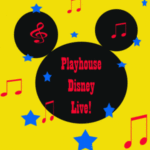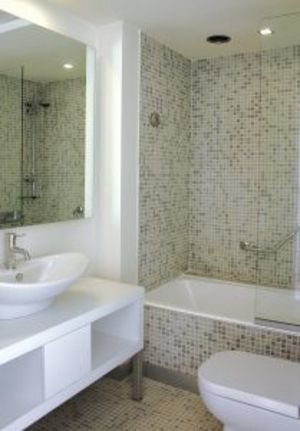Designing and using budgets in a proposal helps the reader (s) stay interested and see where money is going and how much money is need to complete a project. There are four types of proposals: research proposal, planning proposal, implementation proposal and estimate proposal (Johnson-Sheehan, 2008). No matter which proposal is used having a good design and budget is necessary. The four budget types that are commonly used in proposal would be an itemized budget, non-itemized budget, fixed budgets, and flexible budgets. Each of these budgets types would work for one of the four proposal types. When thinking about design knowing which design element would work best with the proposal type will help in getting a positive response. The four design elements would be: balance, alignment, grouping, and consistency. These design elements will keep readers interested and help in understanding the information in the proposal.
Budget Types
The four main budget types are an itemized budget, non-itemized budget, fixed budgets and flexible budgets. An itemized budget is a budget that breaks down the proposals expense to their smallest elements (Johnson-Sheehan, 2008). Itemized budgets account for every dollar being spent. This budget would not work well with a project that had unpredictable costs that would need to be adjusted in the future. Non-itemized budgets are used when readers do not need to know where every single dollar is being spent. These types of budgets are used when an internal employee produces a proposal for his or her department. Fixed budgets provide readers with a product or service for a set price (Johnson-Sheehan, 2008). This budget gives the reader the assurance of no rising costs even if prices go up. The negative to a flexible budget would be the reader will pay the fixed cost even if the price goes down. Flexible budgets are budgets that adjust according to changes in the project costs (Johnson-Sheehan, 2008). The use of this type of budget would be for projects that are long term. This will leave room for costs that were not projected at the beginning of the project. The negative to this type of budget would be the investor or company may run out of money due to the costly items and the project will not get finished.
The Four Principles of Design
Thefour principles of design are balance, alignment, grouping, consistency, type face, labeling, and lists. Balance is when the design offsets each other to create a stable feeling in the text (Johnson-Sheehan, 2008). Keeping a page balanced does not mean that images or text has to be mirrored. It means that if there is text on the left offset it with a picture or table on the right. Keeping the page in balance means having the right amount of text and pictures. Too many pictures will attract the reader’s eye and the reader may miss important information in the text (Johnson-Sheehan, 2008). Having the right amount of text and pictures will keep the reader focused on the whole page not just certain elements of the page. Alignment is the use of vertical white space to help readers identify the various levels of information in a proposal (Johnson-Sheehan, 2008). Using indented lines shows the reader the information broken down into groups of similar information. This can help the reader find information faster without reading every single line. Grouping is a technique to help break down the text into smaller parts that are more comprehendible especially for readers who are scanning the document (Johnson-Sheehan, 2008). Grouping involves using headings, rules and borders. Heading are used to show new topics. Using rules is like a newsletter with many different sections separated by lines. Borders are used to highlight charts or graphs within the text. Consistency means that each page should be designed consistently with the other pages in the document (Johnson-Sheehan, 2008). Using headers and footers, typefaces, labeling and lists help keep the document following the same pattern. Headers and footers are where page numbers and/or proposal title is listed. Typefaces are the font used. Labeling is putting a number to a chart that goes with a paragraph. Lists help in defining step by step process to achieve a goal.
Solicited and Unsolicited Planning Proposal
A planning proposal offers plans for improvements or recommendations for taking action (Johnson-Sheehan, 2008). Planning proposals could be use for proposals that involve making improvements to an existing building or improving customer service. A company or agency that advertises that it desires a solution to a problem is called solicited planning (Alley, 2008). A company advertises the need for a proposal in a newspaper or on the internet, etc. The writers provide the company with solutions to the objectives and goals that were listed by the company. This proposal will also map out the steps need to achieve these solutions. An itemized budget would be used in a solicited planning proposal. This is because the company will want to see where the money is being spent. Unsolicited planning would be an internal employee taking it upon him or herself to come up with a plan to improve his or her department (Alley, 2008). This type of proposal would need a non itemized budget. This is because the person writing the proposal knows the department’s budget and the deciding manager does not need to see where every dollar is being spent.
A Design for a Solicited and Unsolicited Planning Proposal
A proposal design that uses lists would be beneficial for planning proposals. This is because a planning proposal shows how a process will be achieved step by step. The design will show numbers or letters for each step throughout the proposal and important information will be marked with bullets. This will help the reader scan the document looking for important information.
Summary
Proposal writing has many different designs, budget factors and different types of proposals. Determining which type of proposal to use will be based on the information given to the reader in the RFP. Depending upon the needs of the company fixed, flexible, itemized or non-itemized budgets will need to be used. The overall design of the proposal will help keep the reader focused and on the proposal and more willing to accept it.
References
Alley, Michael 2008. Proposals.
http://www.writing.engr.psu.edu/workbooks/proposals.html
Johnson-Sheehan, Richard 2008. Writing Proposals.
Longman Inc. A Pearson Education Company





